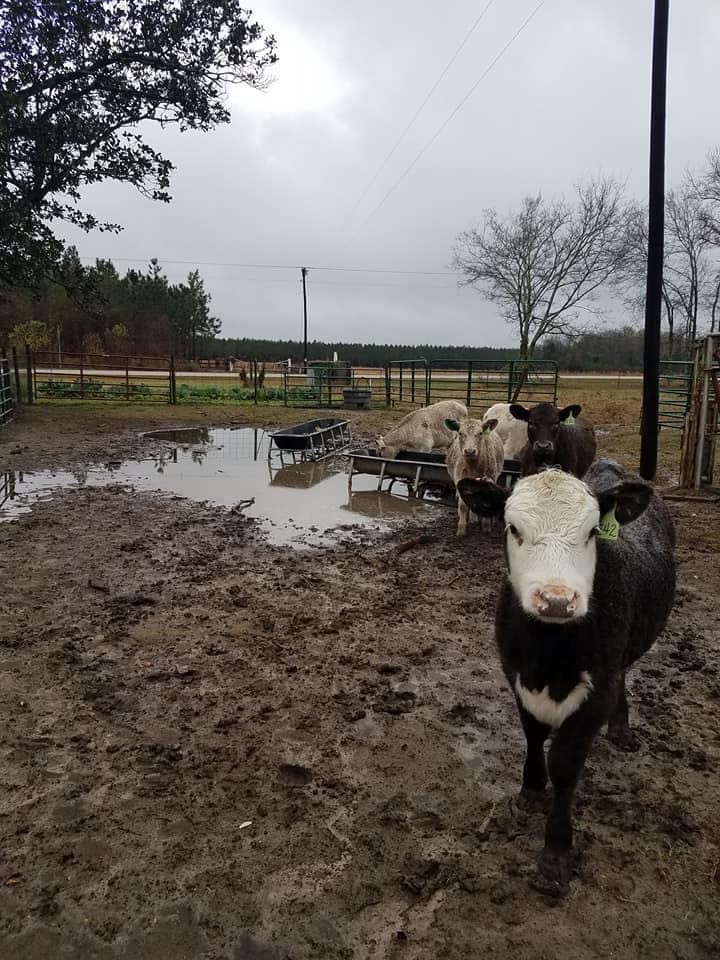On our farm, dealing with mud in high traffic feeding areas is a constant battle. Jeremy Kichler, Colquitt County Ag Agent and Forage Extension Member, discusses strategies for mud mitigation.
If you are feeding hay in the winter, eventually you are going to have to deal with mud. Mud increases animal stress and can lead to increased production costs. It is important for producers to know how mud limits livestock production and ways to manage this issue.

Mud can affect cattle performance. When cattle have to walk through mud it increases their energy demand, in turn feed consumption increases to meet their needs. However, the cattle may actually eat less because walking in mud requires more effort to obtain food and water. Over time mud can buildup on cattle causing their energy requirements to again increase in order to keep warm. This can result in reduced growth, reproduction and lower profitability. Mud is going to be a problem around feeding areas, gates, and water locations. These areas are challenged due to hoof and tractor traffic and over-grazing.
So, what can I do to manage mud on my farm? One of the first steps is to manage over-grazing. Over-grazing can expose bare soil, increase compaction, and reduce drainage. A study conducted in New Zealand concluded that a reduction of 50 to 65% in spring pasture productivity was seen from damage that occurred after a wet winter. Cattle producers can consider sacrifice areas to help mediate over-grazing. A ‘sacrifice area’ is an area used to confine animals to protect pastures from overuse during times of slow growth and wet months. Livestock can be taken off healthy pastures and fed hay in sacrifice areas during or after a rain event. This would decrease the chances of treading and minimize plant damage. Sacrifice areas should be located in higher areas of the pasture on well drained soils or sloped (2 to 4%) away from bodies of water. The maintenance of sacrifice areas needs to be addressed periodically. Growers need to clean out manure, feed and wasted hay as this material can contribute to the creation of mud.
Producers who inventory their hay based on forage quality can make strategic feeding decisions to help manage sacrifice areas. When conditions get tough, the lower quality hay can be fed and the waste can be used for bedding or footing around the hay feeders. Every couple of days the higher quality hay can be used. This would potentially reduce waste of this higher quality forage.
Feeding surfaces such as gravel, sand, or concrete can be considered to manage mud on the farm. Cattle producers can contact their local NRCS for more information about heavy use area protection and what cost-share options might be available.
Other concepts to consider could be to incorporate a rotational grazing layout that has a central area where water and shelter is available, or unroll large round bales in a dry part of the pasture. This practice will help distribute nutrients over a larger area. Another alternative is fenceline feeding systems. These systems provide an alternative to feeding hay in the pasture. If the fenceline feeding systems are designed and placed correctly, then it may not be necessary to use tractors in the fields at all thus reducing potential soil compaction due to winter feeding.